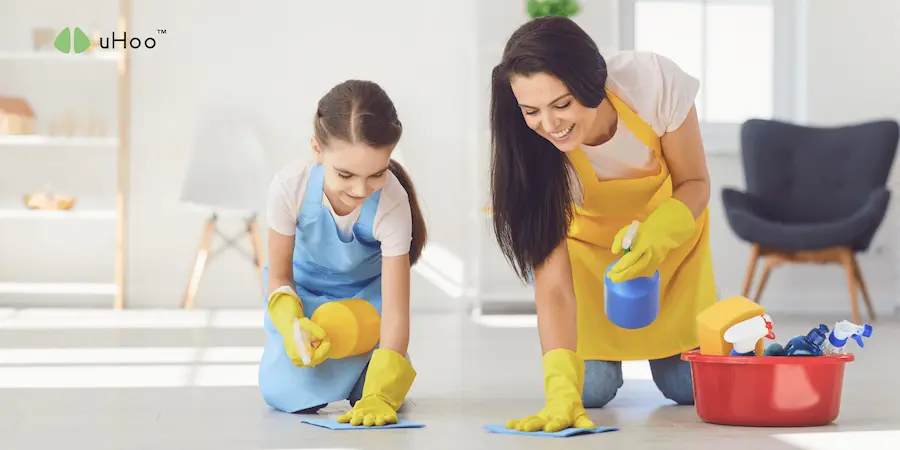For those with allergies or sensitivities, the fabrics in our homes can be both a source of comfort and a potential trigger. Dust mites, pet dander, pollen, and mold spores love to cling to fibers, turning our cozy sanctuaries into allergen havens. Choosing the right fabrics and implementing a consistent cleaning routine are crucial steps in creating an allergy-free home. Here are 10 effective cleaning tips to help you keep your sensitive spaces breathable and comfortable.
Tip #1: The Hot Water Hero for Washables
Whenever possible, wash bedding, curtains, and other washable fabrics in hot water (above 130°F or 54°C). This temperature is effective at killing dust mites and removing many allergens. Check fabric care labels to ensure they can withstand hot water washing.
Tip #2: Embrace Hypoallergenic Laundry Products
Opt for fragrance-free and dye-free laundry detergents and fabric softeners. These “free and clear” products are less likely to cause skin irritation and won’t leave behind chemical residues that can trigger allergic reactions. Consider an extra rinse cycle to ensure all detergent is removed.
Tip #3: The High-Powered HEPA Vacuum Routine
Invest in a vacuum cleaner with a HEPA (High-Efficiency Particulate Air) filter. These filters are designed to trap 99.97% of particles 0.3 microns in size, effectively capturing dust mites, pet dander, and pollen. Vacuum carpets, rugs, and upholstered furniture at least twice a week, paying attention to crevices and under cushions.
Tip #4: The Microfiber Magic for Dusting
Ditch feather dusters that simply spread allergens. Use microfiber cloths, which trap and lift dust particles effectively. Dampen the cloth slightly for even better results on hard surfaces before they accumulate on fabrics.
Tip #5: Allergen-Proof Bedding Encasing
Protect your mattress and pillows with allergen-proof encasings. These tightly woven covers prevent dust mites from infesting your bedding, a primary source of allergen exposure during sleep. Wash the encasings regularly in hot water.
Tip #6: Steam Clean for Deep Allergen Removal
For carpets and upholstery that can tolerate it (check fabric codes!), steam cleaning can be a powerful tool for deep allergen removal. The high temperature of the steam can kill dust mites and loosen embedded allergens, which are then extracted. Ensure thorough drying afterward.
Tip #7: Regular Washing of All Soft Furnishings
Don’t just focus on bedding. Regularly wash curtains, throw blankets, and even pet beds if possible. These items can also harbor significant amounts of allergens.
Tip #8: Minimize Fabric Clutter
The more fabric items you have, the more places allergens can accumulate. Consider decluttering unnecessary throw pillows, blankets, and fabric wall hangings to reduce allergen reservoirs.
Tip #9: Control Humidity Levels
Dust mites thrive in humid environments. Maintain a relative humidity level between 40-50% in your home using a dehumidifier, especially in damp areas like bathrooms and basements.
Tip #10: Air Purifier Power-Up
Consider using a high-quality air purifier with a HEPA filter to remove airborne allergens, including dust, pollen, and pet dander, before they settle on fabrics.
After implementing these allergy-focused cleaning strategies, it’s beneficial to monitor the air quality in your home to ensure your efforts are truly creating a healthier environment. A uHoo air quality monitor can be a valuable tool in this regard.
By tracking particulate matter (PM2.5 and PM10), which includes dust and airborne allergens, uHoo provides real-time data on the air you’re breathing. This allows you to assess the effectiveness of your cleaning routine and take proactive steps to maintain a consistently cleaner and more allergy-free home.



